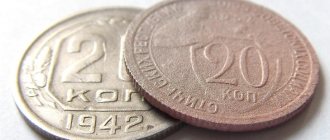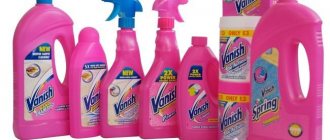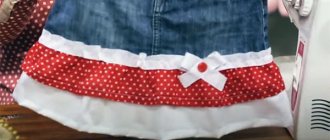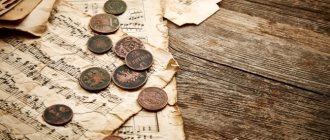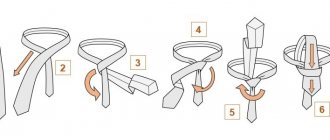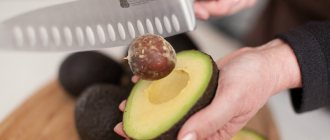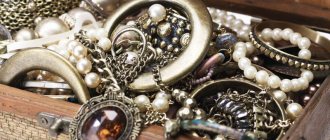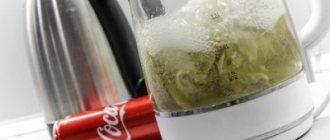Home page » Home and comfort » Cleaning
Author of the article
Svetlana Pavlikhina
Reading time: 6 minutes
AA
Numismatists treat their collections with trepidation and make sure that each piece is in perfect condition. Sometimes they wonder how to clean a silver coin at home without damaging it and reducing its value.
Cleaning can be done in a variety of ways, each with its own advantages and disadvantages.
Features of cleaning silver coins
Before you start cleaning, you need to carefully examine the coin to determine the degree of oxidation and contamination. If dirt must be cleaned, then in certain situations you don’t have to get rid of the oxide.
An antique coin gains special value thanks to its patina, but sometimes its appearance deteriorates significantly.
As a rule, if the oxide is uniform and the rust is not visible, then it is better not to clean it. If the old coin is covered with unsightly spots that hide the design, then they are removed.
Before cleaning, you need to at least approximately determine the price of the product.
When minting large coins, high-grade silver was most often used, and in the case of small coins, low-grade silver was used. Taking this nuance into account, various cleaning methods are used.
Process nuances
Before cleaning a coin, determine the current condition of the product and the approximate amount of contamination. The first stage of cleaning is the removal of soil residues and other easily disposable contaminants. Most of the numismatic items are covered with plaque. It is necessary to determine what exactly covers the surface of the product that is supposed to be cleaned.
If the coating is represented by patina, then there is no need to remove it; such a layer protects the object from corrosion and the influence of negative factors. It is necessary to clean silver of patina only if the product loses its appearance due to a thick layer of plaque and the design cannot actually be seen. In other versions, patina is one of the factors that increases the value of the product.
Before starting to clean a silver coin, experienced numismatists and jewelers recommend approximately determining the value of the item and the approximate fineness of the precious metal. In a number of options, it is possible to start from the size - the larger the object, the higher the standard. Previously, small coins were made with less precious metal content. This procedure will allow you to select the product that will cause the least damage to the product. However, there are also universal methods suitable for virtually all types of silver alloys.
Cleaning Rules
To give coins a more attractive appearance, the procedure must be performed strictly according to the rules:
- First, surface contaminants are removed. To do this, use a soap solution and a soft toothbrush.
- Cleaning is carried out carefully, slowly, so as not to damage the surface.
- Once surface cleaning has been completed, a decision is made as to whether the patina needs to be removed.
- The product is cleaned with the selected product.
- Upon completion of the procedure, the coin is washed with warm water.
Cleansing rules
Before starting the process, it is necessary to remove dirt and dust from the surface of the coins, since any actions using cleaning agents will not have a positive effect if the product is dirty. Once the silver has oxidized, the patina does not need to be removed as it can indicate the age of the coin and increase its value.
Cleaning should be done very responsibly. Before you start treating coins with special solutions, you must perform the following steps:
- remove all dirt and dust from the surface using a soft and clean cloth, toothbrush or other brush with soft bristles;
- When the coin is cleaned of dirt, it must be rinsed and wiped dry.
When cleansing, there are rules, if not followed, the process will not bring a positive result. To remove contaminants, you must adhere to the following recommendations:
- movements must be careful and smooth so as not to damage the inscriptions applied to the surface of the product;
- It is prohibited to use hard brushes or abrasive materials;
- Coins should not be allowed to rub against each other.
The use of folk remedies for cleaning
Products can be cleaned using simple and affordable means. It is worth considering the most common of them.
Lemon acid
Often cleaning is done with citric acid. This tool can easily complete the task.
The procedure is performed according to the following scheme:
- Citric acid is added to water in a ratio of 3:1.
- Place silver in the solution and periodically turn the product over.
- Make sure that the coin is completely covered with liquid.
- Use a toothpick and cotton swabs to remove dirt and dust.
- When the dirt begins to peel off, the coin is taken out and wiped.
The main thing is to remember that you cannot leave silver in such a solution for a long time, otherwise the patina will be damaged and it will be problematic to restore it.
Ammonia
To clean the product, you can purchase regular ammonia at the pharmacy. Silver is briefly immersed in it, after which the surface is wiped with a cotton pad. Then you just need to wash the coin in running water and wipe dry.
Soda and foil
When using this method, the following actions are performed:
- Pour 0.5 tsp into the foil. soda
- Pour in about 1 tsp. water.
- Mix the ingredients to form a paste.
- Silver is placed on the resulting mass.
- The edges of the foil are wrapped to prevent the solution from spilling out.
Do not press or rub the coin, otherwise scratches will appear on the surface. If the coating is too thick, then the product is left in this condition overnight.
Soap solution
The product is considered gentle, capable of cleaning minor stains. It is used in primary metal processing. And use laundry or baby soap .
Procedure steps:
- The soap is ground on a grater.
- The resulting chips are diluted in water (the liquid should be warm).
- Place the contaminated item in the soapy solution.
- Leave it in the solution for about an hour.
- Wipe the surface and remove dirt with a toothbrush.
Toothpaste
It also turns out to be an effective remedy. In this case, a small amount of paste is squeezed directly onto the metal. After this, the surface is cleaned. Use a soft cloth or brush.
Vinegar
Vinegar also does the job well. A small piece of soft cloth is moistened in it. After this, wipe the surface until it begins to shine.
To ensure that this process takes a minimum of time, the vinegar is preheated a little.
Salt
The method is very common, but is only suitable for coins that are not of particular value.
When using it, just a few simple steps are performed:
- Salt is mixed with water in equal proportions.
- The resulting slurry is spread on foil.
- A silver object is placed on top and wrapped in foil.
- After a couple of hours, the product is removed and washed with water.
Numismatist's commentary on cleaning ancient coins
Pertsev Artyom Leonidovich
Numismatist, author of the book “The World of Coins”
Ask a Question
It is not enough to simply clean a silver coin. It is important to ensure the safety of monetary units for a long time. To do this, you should perform the following steps: • upon completion of cleaning, the metal is washed well with water at room temperature and dried; • a small amount of paraffin is rubbed between the fingers. • Rub the coins with your fingers without applying strong pressure to the surface. • Make sure that the entire surface is evenly covered with the substance, without lumps.
Removal of specific contaminants
The choice of product largely depends on the type of contamination. The cleaning technology taking into account this nuance is slightly different.
Black
A mixture of soda and ammonia will help get rid of blackness. These components are mixed in equal proportions and applied to the surface of the product.
After this, it is wiped with a cloth and washed with water.
Greenery
A green tint indicates the presence of copper in the composition.
Regular ammonia will help remove greens: the product is immersed in it and left for about a quarter of an hour. This is quite enough to remove plaque.
Patina
To remove patina, a 5% formic acid solution is most often used. The liquid is poured into a glass container and the item that needs cleaning is immersed in it.
After 5-10 minutes, remove the silver and wipe with a soft cloth.
Rust
To remove rust, it is recommended to use hydrochloric acid. But it is impossible to buy it in its pure form, so household products containing this substance are used. They are diluted in water in a ratio of 1:10 and poured into porcelain dishes.
Money is immersed in the liquid and kept in it for no more than 20 minutes, taken out of the solution and cleaned.
Canning coins
After cleaning, silver is preserved. All cleaning residues are removed from the surface of the product. To preserve the specimen, it can be lubricated with a greasy product that prevents the rapid formation of oxide. Vaseline oil is often used in this capacity. The preserved coin is placed in a holder - a specialized storage bag. It is undesirable to allow tactile contact with the product in the future - this leads to the emergence of new contaminants.
Review of store products
There are several special products designed to clean silver:
- Silbo. Produced in Germany. Cleaning with it takes a maximum of 8 minutes. The coin is placed in a strainer and dipped into the solution, after which it is washed and dried. A protective film is formed on the surface to prevent corrosion.
- Leuchtturm. Removes oxides and dirt. The metal object is immersed in the solution for 5 minutes, and then washed and dried.
- Shine Coins. Used to remove black deposits, dirt and oxide. The surface of the object is wiped with a cloth soaked in the product for several seconds.
- Asidol-M. Used to remove grease, plaque and dirt. The solution is applied to the surface and after a minute wiped with a soft cloth.
Cleaning Rules
In order to most effectively clean the surface of a silver item and not accidentally damage it, you need to take precautions. The rules are quite simple:
- First, remove surface dirt using a soft toothbrush and soapy water.
- You need to clean the coating carefully, without haste, so as not to cause accidental damage. Do not use abrasive materials or products.
- After surface cleaning, try to determine the approximate value of the item and, based on this, make a decision about removing the patina.
- When using cleaning solutions, do not allow coins to come into contact with each other.
- After you clean the metal, you should rinse it well in warm water.
Under no circumstances should you heat a coin and put it in cold water. This will cause damage to the silver item.
If you are unable to determine the purity of a silver coin, use one of the universal methods for cleaning metal. In cases where there is a suspicion that the product is of high value, it is better to use the services of a specialist.
What to choose: professional or folk remedies
Store-bought products can clean silver without harming it; you just need to strictly follow the instructions. It is impossible to guarantee the absence of damage when using improvised materials.
Professional solutions are expensive, so their use is not advisable when cleaning coins that are not of particular value.
The choice of option should be made taking into account what kind of money is being cleaned. For simple coins, folk remedies are perfect, and for expensive ones, special preparations are used.
How can you clean silver?
Silver coins can be cleaned at home using a suitable method. This method and means are determined in accordance with the characteristics of the material (specific alloy) and other features of the item requiring cleaning. Not all silver items are best cleaned by hand; it is advisable to give some items to specialists. It is possible to distinguish 4 main types of cleaning silver coins:
- chemical;
- cooking;
- electrolysis;
- mechanical.
The above are the main types that can be organized at home. But there are several methods that allow you to clean silver coins with minimal money and time expenditure and get a decent result, comparable to a professional one. The simplest options for remedies that are used at home are:
- laundry soap solution;
- toothpaste;
- ammonia;
- acetic acid;
- citric acid (powdered);
- table salt;
- lemon juice;
- formic acid;
- water in which the eggs were boiled;
- baking soda.
For reference!
It is possible to clean a silver coin not only with folk remedies, but also by purchasing specialized compounds designed for this specific purpose. Such products are sold in jewelry stores and workshops. But when working with professional preparations for cleaning silver products, you must always follow the instructions and proportions specified by the manufacturer.
Advantages of citric acid
You can use citric acid if you cannot take antique collectibles to a jeweler. The cleaning method has several advantages:
- Removes oxides from the product.
- Removes heavy dirt.
- Does not harm metal.
Before and after cleaning with citric acid
The main thing when cleaning metal with this method is the need to keep track of time. The solution may leave unsightly stains on it, but only if the coin is kept in acid. During simple cleaning, the main advantage of the method is a good result.
How to properly store silver coins
The appearance of collectible coins often depends on storage. This means you need to understand how to do it correctly. There are several types of packaging designed specifically for storing coins:
- An album is the most financially accessible way. Most often popular among new numismatists. The album itself is a book with fastening rings for special insert sheets. Each unit on such a sheet has a separate place. The number of cells depends on the size of the collected items.
- Slab, capsule - are a kind of plastic storage boxes. They provide protection from damage to rare specimens and limit air access. They differ from each other in shape.
- Holder – Mostly considered a temporary case. Made of cardboard, it is an envelope with a glass or plastic hole.
Stage 0 - Preview
Let's say it very loudly and clearly: any cleaning will not turn its object into a UNC condition coin. Even if there are no cavities or nicks on the coin, and the coin field begins to sparkle, the experienced eye of a collector or dealer will instantly distinguish it from the original shine inherent in specimens that have just left the territory of the mint. The price of a cleaned coin is much lower than the cost of its sister, found in the “Uncirculated” category. That’s why comments are so common on forums: “You just cleared half the value of a coin.” A beautiful patina for old coins is much preferable to an unnatural shine after diligent cleaning.
If you have an expensive item in your hands, you should not start cleaning it without sufficient experience. It is better to pay ten thousand to a specialist and get a coin that can start at one hundred thousand, than to find a twisted piece of metal that even a beginner would not want to add to the collection. Having two coins minted from the same metal - a rare one and an ordinary one - it is worth trying the cleaning method first on an ordinary coin and making sure that cleaning did not kill the coin or cause significant harm to it.
At this stage, we take and put aside all the coins of the “PROOF” design and with a polished coin field. These coins cannot be cleaned. Any impact is detrimental to them. Study the auction aisles (you can use the database on our website), and you will see how the smallest defect significantly reduces the price and forces most sellers to refuse to purchase a copy of less than perfect condition. If it seems to you that removing a small dark spot is easy and simple, then remember the parable of the monkey carrying peas and dropping the pea. Trying to pick it up, she dropped ten more. In an attempt to collect them, she scattered another hundred. Defects on a polished coin will grow in the same progression with the simplest cleaning. Yes, polished coins are cleaned by professionals, but that process is no longer closer to cleaning, but to restoration (which we will not touch on here).
If you still can’t wait to get started with polished coins, please read the article on our website “How to PROOF”.
Do I even need to clean my coins? The answer to the question of what to do with patina
Novice numismatists and sellers work on the principle: “The more shine, the higher the price!” As a result, they try to rub the surfaces with special products or polish them with felt. Such methods lead to traces of tampering and wear appearing on the surface, which automatically reduces the value of the coin. On the forums you can find a completely reasonable comment: “You just cleared off half the cost...”.
The problem of trying to “polish coins until they shine” does not end there. Beginning collectors, in pursuit of a beautiful surface, risk erasing the beautiful patina - a natural coating that forms as a result of interaction with the environment (even on products that are stored in well-protected accessories).
After cleaning the coin unsuccessfully, the “expert” begins to look for ways to restore the iridescent patina. But the problem is that a cleaned and polished copy will never have the shine of a stamped coin.
Of course, to the seller who has cleaned and polished the coin, it appears that it is already in “UNC” condition. But in reality it's not like that. When examining the obverse and reverse, an experienced appraiser will immediately find characteristic nicks, cracks and scratches, evidence that the specimen was still in circulation.
How to prepare coins for cleaning at home?
For example, rare coins were recovered from the treasure, including 2 kopecks from 1925. Of course, today prices are not as high as they were in the 50s of the twentieth century. But still, I wouldn’t want to ruin such an expensive purchase by improper cleaning.
The coin needs to be prepared. To do this, follow simple step-by-step instructions:
Determine the condition as well as the alloy. It is believed that tin or lead will be the most “capricious” (the reason is that you still have to rub the surface, and due to the softness of the metal it immediately becomes covered with cracks and scratches). There are slightly fewer problems with aluminum: the metal is also soft, but there are no problems with cleaning it.
- Remove foreign impurities in the form of earth, clay, dirt. To do this, simply soak the coins in a soapy solution. Dirt must be removed carefully so as not to scratch the surface.
- Rub lightly.
- Dry naturally.
How to prepare rare coins for cleaning? You should not wash them under running water, because... it contains particles of chlorine and foreign impurities. It is ideal if you have distilled or bottled water.
